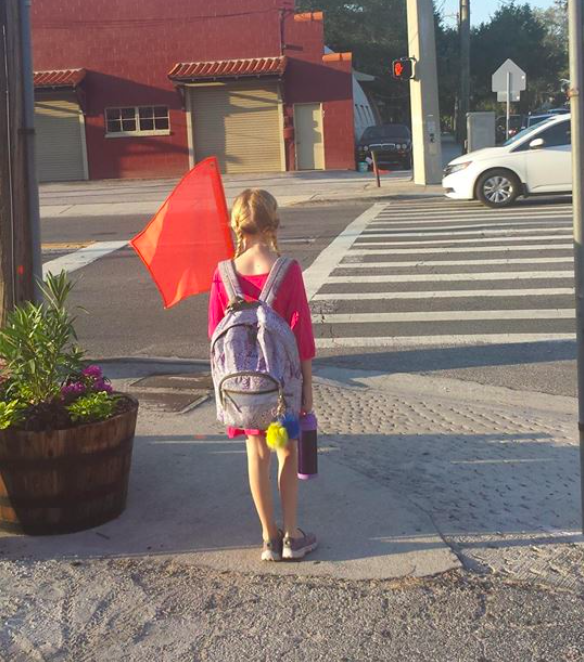Every day hundreds of children in the Tampa neighborhood of Palma Ceia encounter a dangerous situation on their way to school: Bay to Bay Boulevard.
This four-lane, high-speed arterial, locals say, is a disaster waiting to happen. It offers pedestrians only a narrow sidewalk right up against 40 mph traffic. And even then, it's frequently interrupted by driveways and telephone poles.
The children who attend four different schools in the area are forced to cross the road daily. And they have adopted some improvised strategies to stay safe, like carrying orange flags.
"It is a frightening and unsafe setting," said neighborhood resident Emily Hinsdale. "I would not walk along that road if I could avoid it with my kids."
Even so, in the spring, Tampa Mayor Bob Buckhorn killed a plan — recommended by his own staff — to redesign Bay to Bay to make it safer. The plan called for reducing the number of travel lanes to three, with a center turn lane and creating a small painted buffer between traffic and the sidewalk — a standard "road diet" that has a long record of success in improving safety for all road users, often with no increase in trip times. Still some drivers from surrounding neighborhoods opposed the plan.
In April, more than 100 Tampa residents — mostly Palma Ceia residents — protested Buckhorn's decision to kill the project.
They included members of the Sidewalk Stompers, a nonprofit group Hinsdale founded that encourages neighborhood schoolchildren to walk to school. About 220 students in the area are part of the program, walking or biking to school twice a week — a 250-percent increase since its start a few years ago.
Palma Ceia residents are getting a second chance at a Bay to Bay Boulevard than can feel safe sending their kids across. County Commissioner Mariella Smith, who was elected in November on a smart growth platform, has taken up the issue and is giving the road diet idea new life. County Commissioners will vote on her motion on Feb. 20.
Hinsdale is hopeful the County Commissioners will push the safer design forward, especially considering Tampa's recent ranking as the ninth most dangerous area in the country for pedestrians.
"I think it's important that we invest in a future that consider all users, from drivers to bicyclists to pedestrians," she said. "All of these are people who live in this community, and pay taxes and they ought to have the right to a safe street."






